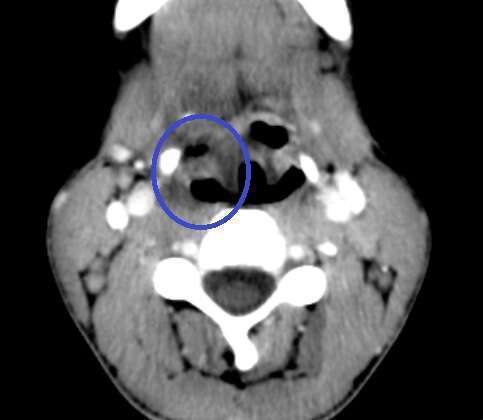
Bacterial Pharyngitis Complicated by Epiglottitis in an Adolescent: A Case Report
2Department of Allergy and Clinical Immunology, Centro Hospitalar Universitário São João, Porto, Portugal
3Department of Pediatrics, Centro Materno Infantil do Norte, Centro Hospitalar e Universitário do Porto, Portugal
Introduction: Since the introduction of vaccines against Haemophilus influenzae type B on routine immunization schedule, infectious epiglottitis has become a rare pediatric diagnosis (0.6 to 0.8 cases per 100,000 vaccinated children). Currently, the most frequent pathogens involved are other types of Haemophilus influenzae (a, f or non-capsulated), Streptococcus pyogenes, Streptococcus pneumoniae and Staphylococcus aureus. The clinical hallmarks are dysphagia, drooling and respiratory distress, with abrupt onset and rapid progression.
Case report: A previously healthy 16-year-old male with an up-to-date routine immunization schedule was admitted due to a 10-day history of fever and odynophagia. He also reported dysphagia, drooling and dysphonia in the previous 24 hours. Two days earlier, he had been diagnosed with bacterial pharyngitis and received a single dose of intramuscular benzathine penicillin (1.200.000 units). On physical examination, trismus and exudative tonsillopharyngitis were observed. An erythematous and edematous epiglottis on indirect laryngoscopy was suggestive of epiglottitis. Cervical CT scan showed a thickened right aryepiglottic fold and a discrete vallecular asymmetry. He was admitted to an intermediate care unit and an empirical antibiotic treatment with intravenous ceftriaxone (80 mg/kg) and clindamycin (40 mg/kg) was initiated. Methylprednisolone was added due to the persistence of symptoms. He completed seven days of intravenous antibiotics and four days of glucocorticoids. Throughout the admission period, the clinical evolution was favorable and he remained hemodynamically stable, without respiratory distress or hypoxemia; blood cultures were sterile.
Discussion: Although epiglottitis is a rare complication of bacterial pharyngitis, it should be considered when the clinical hallmarks are present and symptoms seem more severe than the apparent objective findings, particularly after poor response to previous antibiotic treatment. Early recognition is essential considering its potentially fatal outcome. Treatment includes airway management (if permeability is compromised) and antibiotic therapy. Glucocorticoids are not routinely recommended and are usually reserved for refractory cases.

Powered by Eventact EMS